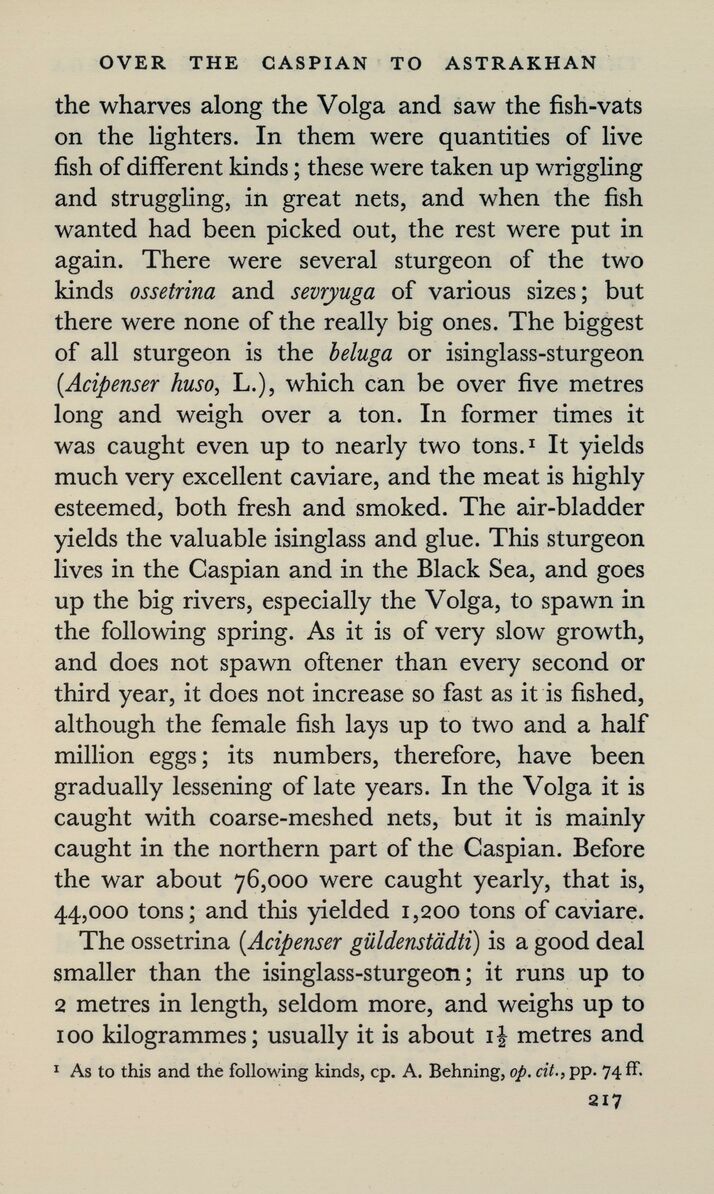
Full resolution (JPEG) - On this page / på denna sida - IX. Over the Caspian to Astrakhan

<< prev. page << föreg. sida << >> nästa sida >> next page >>
Below is the raw OCR text
from the above scanned image.
Do you see an error? Proofread the page now!
Här nedan syns maskintolkade texten från faksimilbilden ovan.
Ser du något fel? Korrekturläs sidan nu!
This page has never been proofread. / Denna sida har aldrig korrekturlästs.
OVER THE CASPIAN TO ASTRAKHAN
217
the wharves along the Volga and saw the fish-vats
on the lighters. In them were quantities of live
fish ofdifferent kinds ; these were tåken up wriggling
and struggling, in great nets, and when the fish
wanted had been picked out, the rest were put in
again. There were several sturgeon of the two
kinds ossetrina and sevryuga of various sizes; but
there were none of the really big ones. The biggest
of all sturgeon is the beluga or isinglass-sturgeon
(Acipenser huso, L.), which can be over five metres
long and weigh over a ton. In former times it
was caught even up to nearly two tons. 1 It yields
much very excellent caviare, and the meat is highly
esteemed, both fresh and smoked. The air-bladder
yields the valuable isinglass and glue. This sturgeon
lives in the Caspian and in the Black Sea, and goes
up the big rivers, especially the Volga, to spawn in
the following spring. As it is of very slow growth,
and does not spawn oftener than every second or
third year, it does not increase so fast as it is fished,
although the female fish lays up to two and a half
million eggs; its numbers, therefore, have been
gradually lessening of late years. In the Volga it is
caught with coarse-meshed nets, but it is mainly
caught in the northern part of the Caspian. Before
the war about 76,000 were caught yearly, that is,
44,000 tons; and this yielded 1,200 tons of caviare.
The ossetrina (Acipenser guldenstådti) is a good deal
smaller than the isinglass-sturgeon; it runs up to
2 metres in length, seldom more, and weighs up to
100 kilogrammes; usually it is about ij metres and
1 As to this and the following kinds, cp. A. Behning, op. eit., pp. 74 ff.
<< prev. page << föreg. sida << >> nästa sida >> next page >>